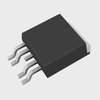-
The maximum safe operating area (SOA) for the IRFZ48SPBF is not explicitly stated in the datasheet, but it can be estimated based on the device's thermal and electrical characteristics. As a general rule, it's recommended to operate the device within the boundaries of the SOA curve provided in the datasheet to ensure reliable operation.
-
Thermal management is critical for the IRFZ48SPBF. Ensure good heat sinking, use a thermal interface material (TIM) between the device and the heat sink, and consider using a heat sink with a high thermal conductivity. The datasheet provides thermal resistance values (RθJA and RθJC) to help with thermal design.
-
The recommended gate drive voltage for the IRFZ48SPBF is typically between 10V to 15V, depending on the application and required switching speed. However, the datasheet specifies a maximum gate-source voltage (VGS) of ±20V, so ensure the gate drive voltage is within this range to prevent damage.
-
Yes, the IRFZ48SPBF is suitable for high-frequency switching applications due to its low gate charge (Qg) and internal gate resistance (Rg). However, consider the device's switching losses, parasitic inductances, and layout-related issues that can affect high-frequency performance.
-
To ensure the IRFZ48SPBF is fully turned on and off, apply a gate-source voltage (VGS) that is significantly higher than the threshold voltage (Vth) specified in the datasheet. Typically, a VGS of 10V to 15V is sufficient. Also, ensure the gate drive circuitry can provide sufficient current to charge and discharge the gate capacitance quickly.
 IRFZ48SPBF datasheet
by Vishay Siliconix
IRFZ48SPBF datasheet
by Vishay Siliconix
 IRFZ48SPBF datasheet
by Vishay Siliconix
IRFZ48SPBF datasheet
by Vishay Siliconix